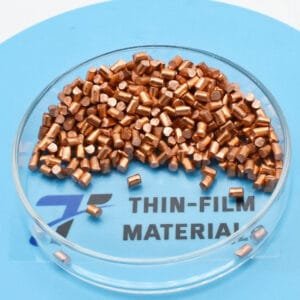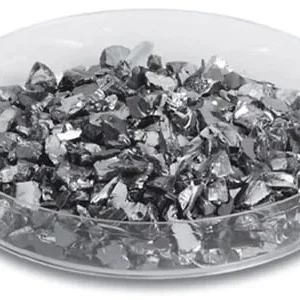Germanium Evaporation Materials Description
Germanium is a brittle, grayish-white semi-metal known for its high reactivity. Unlike some elements, it is not found in its pure form naturally on Earth but is commercially extracted from sources such as zinc ores, specific coals, argyrodite, and germanite. As a semiconductor, germanium is extensively used in the production of transistors, solar cells, and optical materials.
With a density of 5.35 g/cc, a melting point of 937°C, and a vapor pressure of 10⁻⁴ Torr at 1,167°C, germanium is categorized as a metalloid. It shares properties with both metals and non-metals and is commonly used in the manufacturing of transistors and integrated circuits, much like silicon.
High-purity germanium evaporation materials are essential for deposition processes, ensuring the creation of superior quality deposited films. TFM excels in producing germanium evaporation materials with purity levels up to 99.999%, supported by stringent quality assurance measures to ensure product reliability.

Germanium Evaporation Materials Specification
| Material Type | Germanium |
| Symbol | Ge |
| Color/Appearance | Grayish White, Semi-Metallic |
| Melting Point | 973 °C |
| Sputter | RF, DC |
| Density | 5.32 g/cc |
| Thermal Conductivity | 60 W/m.K |
| Synonyms | Ge Pellets, Ge Pieces, Ge Evaporation Pellet, Germanium Pellets, Germanium Pieces, Germanium Evaporation Pellet |
Germanium Evaporation Materials Application
Germanium is utilized in various deposition processes, including semiconductor deposition, Chemical Vapor Deposition (CVD), and Physical Vapor Deposition (PVD). These methods are critical for producing high-quality thin films and coatings. Additionally, germanium is used in optics for several applications, such as enhancing wear resistance, applying decorative coatings, and improving display technologies.



 MSDS File
MSDS File



Reviews
There are no reviews yet.